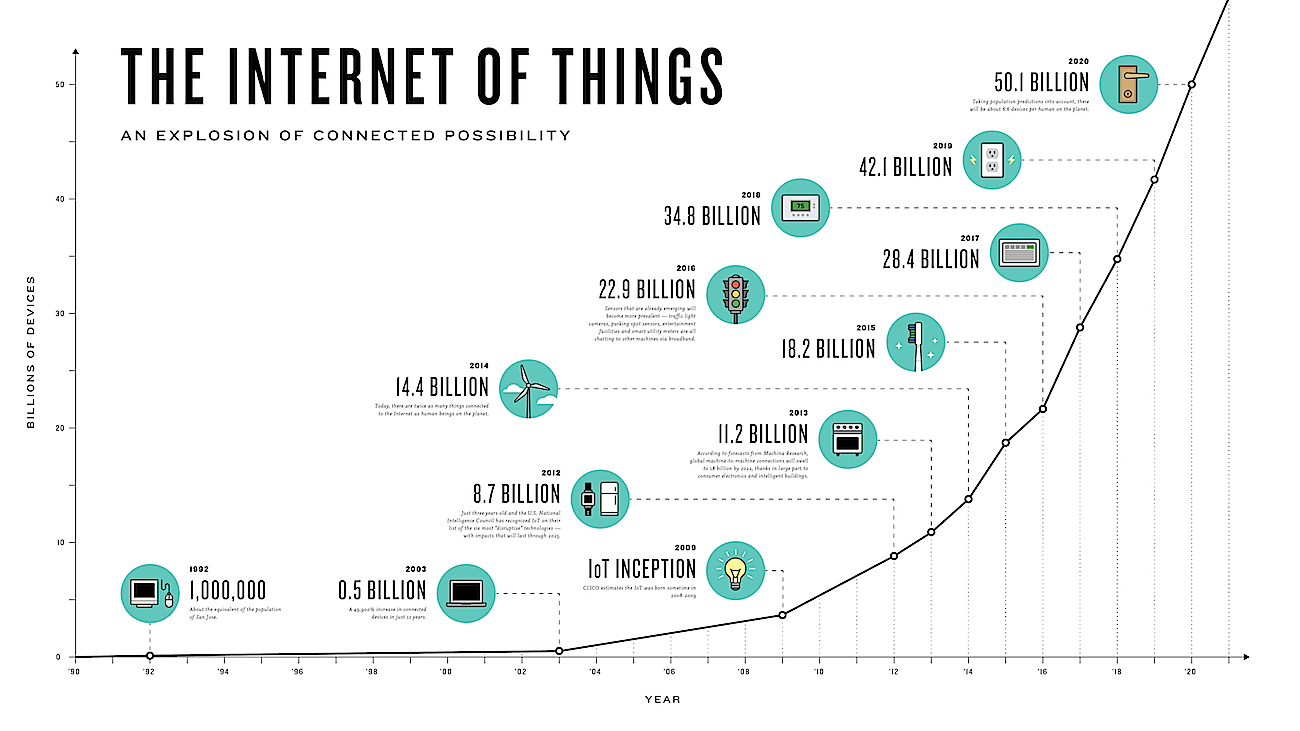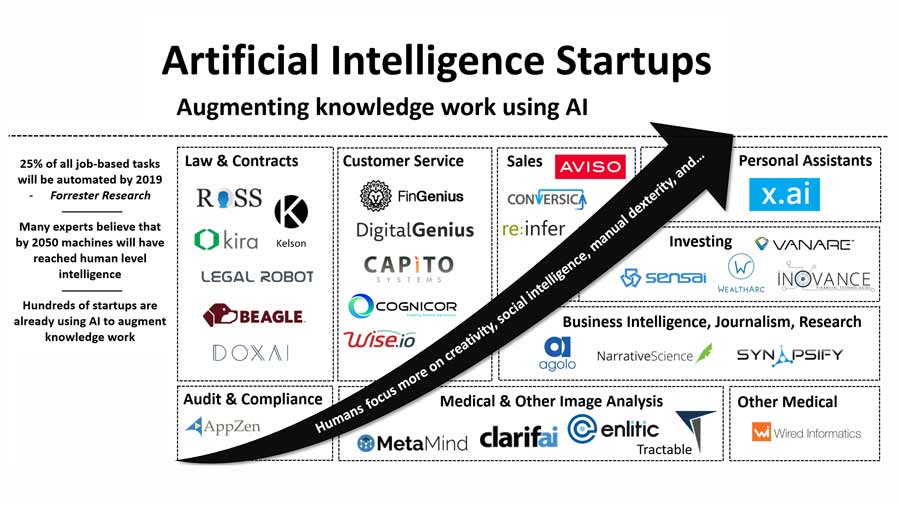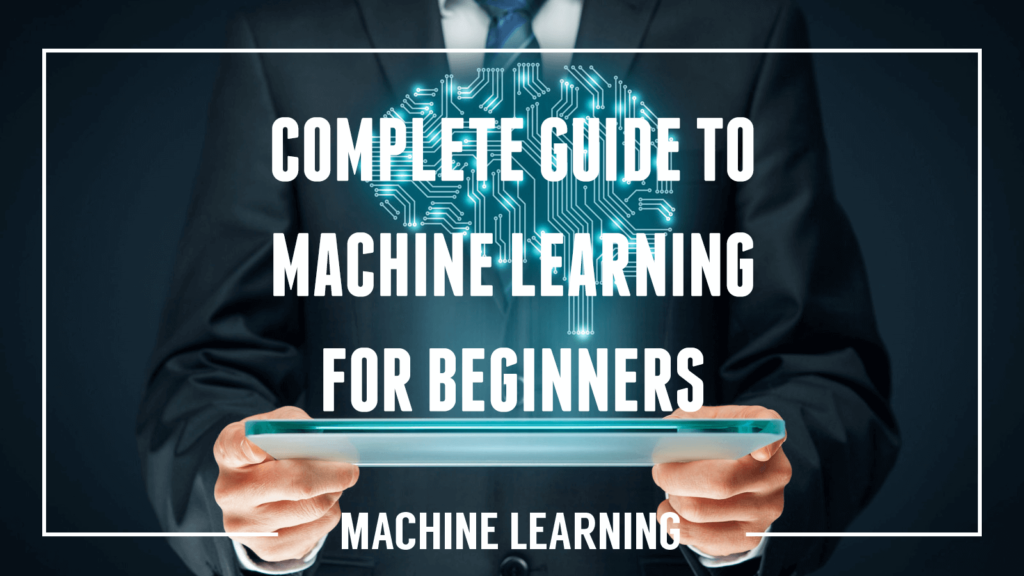What is machine learning and why should you invest in machine learning? The pace and form of digital technologies continue to present huge opportunities to transform organisations. Innovative solutions will change every part of an organisation, from the very products and services to customer experiences.
We are now at an inflexion point. A new modular methodology to structuring an organisation will emerge that provides agile and adaptive operations. The new ‘machine age’ will provide a second phase of transformation as machines improve and advance on our thinking. Organisations will move to distributed networks that are sensing and self-learning.
Up to now we have considered and used computers more as tools. These tools have been applications that allow us to organise information, connect with people, calculate, draw…Computers as tools have enabled us to design buildings, calculate rocket launches and create the internet.
Computers though are now moving into the realm of being “intelligent”. This takes computers from being tools to making decisions and learning. In other words, they don’t have to be programmed.
What is Machine Learning? – The Complete Beginners Guide.

I want to explain Machine Learning (and how it relates to Deep Learning and AI) as well as go onto the important question of how we can use it. A lot of people (CEO’s, CMO’s, other management) need to know now what is Machine Learning in order to assess its potential for their organisation.
What is Machine Learning?
Machine learning is the science of getting computers to act without being explicitly programmed?
Andrew Ng – Stanford University
Machine Learning is a set of methods that enable a computer to take decisions or make conclusions.
The definition of what is machine learning originated with Arthur Samuel in the 1950’s. He defined machine learning as the field of study that gives computers the ability to learn without being explicitly programmed. He wrote a checkers playing program. The checkers playing program learned over time what are good board positions and what are bad board positions, and eventually learned to play better than Arthur Samuel.
At it’s most simple, machine learning is about teaching computers to learn in the same way we do. It is this learning element that presents new and exciting opportunities for organisations. Whilst the cat example is simple it is one task. An organisation may have much more complicated tasks than this. For any given task Machine Learning though can be broken down into smaller Machine Learning algorithms. Together thse form a system that can then do such things as learn how to drive cars.
WHAT MACHINE LEARNING CAN DO

Businesses and governments are collecting more data than ever before. IBM estimates that 90% of all the world’s data has been created in the last two years. There is also more data being created from more and more devices. By 2020 the Internet of Things (IOT) will consist of over 50 Bn devices connected to the internet, each generating data. Already there is the abundance of data from sources.
Machine Learning becomes a solution to not only finding insights in Big Data, but also then optimising ‘systems’ that generate the data.
Nearly $6 trillion will be spent on IoT solutions over the next five years.
From sensors in agriculture that measure water and crop health to human monitors to fridges to wearables to sensors in workplaces and factories. The devices, and the data they generated offer. new possibilities for efficiency gains, new product innovation and services.

This data is the fuel for machine learning. It is the raw material from which machines can make their recommendations and predictions. It is the combination of lots of data and lots of processing power that now means that machine learning algorithms work quickly.
Almost half of all business decisions made are based on gut feel rather than data.
Most organisations big data strategies are focused on extracting insights to create value and compete. The McKinsey Global Institute indicates that data-driven organisations are:
- 23 times more likely to acquire customers
- 6 times as likely to retain those customers
- 19 times as likely to be profitable as a result.
Machine Learning systems can learn from large data sets. Unlike coding a software program with specific instructions to complete a task, Machine Learning allows a system to learn to recognise patterns on its own and make predictions and decisions.
More and more decisions will be based on identifying and making decisions from new insights gained from Machine Learning. Machine Learning will also reveal relationships between data sets that are as yet not known or understood.
What is Machine Learning – The Other Terms Deep Learning and AI.
Artificial Intelligence is the broadest way to think about advanced, computer intelligence. IBM’s Deep Blue, which beat chess grand master Garry Kasparov at the game in 1996, or Google DeepMind’s AlphaGo, which in 2016 beat Lee Sedol at Go, are examples of narrow AI—AI that is skilled at one specific task.
Deep learning is a subset of ML. It uses some ML techniques to solve real-world problems by tapping into neural networks that simulate human decision-making. Deep learning requires massive datasets to train itself on.
THE TOP TEN WAYS MACHINE LEARNING IS USED TODAY

To better understand what is machine learning it’s important to review some of the real world ways it is being used.
#1. SOFTWARE SECURITY (MALWARE)
In 2014, Kaspersky Lab reported it was detecting 325,000 new malicious files every day. Humans and even signature-based security solutions can’t keep up, which is why machine learning and deep learning are necessary. Deep Instinct, the institutional intelligence company, noticed that new malware is usually only a slight modification from previous versions of malware. As a result of this they developed a learning model that has no problem detecting the 2–10% variations, and can predict which files are malware with great accuracy.
#2. FINANCIAL TRADING
Many people want to be able to predict what the stock markets will do on any given day, for obvious reasons. But machine learning algorithms are getting closer all the time. Many famous trading firms now use machine learning systems to predict and execute trades at high speeds and high volume. Even a trade with a relatively low probability, at a high enough volume or speed, can make huge profits for the a company. Humans analysing stock movements cannot see the patterns across the vast amount of data as quickly as a machine.
#3. HEALTHCARE
Machine learning algorithms can process more information and spot more patterns far quicker than any human. One study used computer assisted diagnosis (CAD) when to review the early mammography scans of women who later developed breast cancer. The result was that 52% of the cancers were identified as much as a year before the official diagnosis. Additionally, machine learning can be used to understand risk factors for disease in large populations. The company Medecision, used a machine learning platform to identify patterns in diabetic patients. It trained the platform on a database of approximately 8 million patients. The machine learning model identified seven or eight independent variables that can be used to predict avoidable hospitalisations.
#4. LEGAL
The average person tends to view legal documents as too complicated and therefore not easy understand. Some hire a lawyer. Legal Robot, use Machine Learning (and Deep Learning) to translate legal language into plain language. Legal Robot can determine what’s missing from a contract and whether there are elements in a contract that shouldn’t be there. This will help people avoid agreeing to terms and conditions that favour the other party.
#5. FRAUD DETECTION
Machine learning is getting better and better at spotting potential cases of fraud across many different fields. PayPal, for example, is using machine learning to fight money laundering. The company has tools that compare millions of transactions and can precisely distinguish between legitimate and fraudulent transactions between buyers and sellers.
#6. COMPETING AT EVENTS
Improving your position in the Tour de France is difficult if you do not understand where the other cyclists are. Over 200 cyclists participate in the race. TV though doesn’t provide enough coverage for team managers to advise their athletes. The coaches need to know what’s happening in the event. This is where winning Algorithms provides a solution. They monitor what people are saying on social media to help us understand what’s happening in the event. A Machine Learning algorithm is able to determine the race details over social media. In the 2012 Tour de Italia, winning Algorithms was able to tell athletes what was happening 5 minutes before the same information was broadcast over the race’s radio system.
#7. RECOMMENDATIONS
Services like Amazon or Netflix monitor millions of viewing patterns daily. Intelligent machine learning algorithms can compare your particular pattern of viewing to others and determine what you might like to buy or binge watch next. As the Machine Learning algorithm improves the recommendations are getting smarter. Amazon uses the same processes on purchases to recommend other items to you or as a gift to family members.
#8. INTERNET SEARCH
Perhaps the most famous use of machine learning, Google and its competitors are constantly improving what the search engine understands. Every time you execute a search on Google, the program watches how you respond to the results. If you click the top result and stay on that web page, we can assume you got the information you were looking for and the search was a success. If, on the other hand, you click to the second page of results, or type in a new search string without clicking any of the results, we can surmise that the search engine didn’t serve up the results you wanted — and the program can learn from that mistake to deliver a better result in the future.
#9. FACEBOOK FACE RECOGNITION
Facebook’s face recognition software. Facebook knows the name of your friends when you upload a group picture, you don’t even have the to tag them. Previously, Facebook “recommended” users to tag their friends. People clicked on the face on the picture and type their name to tag them. Facebook didn’t know who those people were. Now, when a photo is uploaded onto a user’s profile, Facebook automatically recommends that user tag their friends. And it knows exactly who is who.
#10. NATURAL LANGUAGE PROCESSING (NLP)
NLP is being used in a variety of disciplines. Machine learning algorithms with natural language can stand in for customer service agents and quickly route customers to the information they need. It’s being used to translate obscure legalese in contracts into plain language and help attorneys sort through large volumes of information to prepare for a case. Another interesting use of NLP is in the rise of chatbots. Chatbots are able to translate and interpret human natural language input. This is done through a combination of NLP (Natural Language Processing) and Machine Learning.
What is machine Learning – The Different Types
There are several kinds of machine learning:
- Supervised learning, the “trainer” will present the computer with certain rules that connect an input (an object’s feature, like “smooth,” for example) with an output (the object itself, like a marble).
- Unsupervised learning, the computer is given inputs and is left alone to discover patterns.
- Reinforcement learning, a computer system receives input continuously (in the case of a driverless car receiving input about the road, for example) and constantly is improving.
A large amount of data is needed to train algorithms for machine learning. First of all, the “training data” must be correctly labelled. As an example a GPS location attached to a photo. After this, it is “classified.” This second stage in this example might be when features of the photo in question are labeled and put into the system with a set of rules that lead to a prediction. For example, “cat” and “dog” are inputs into the system that leads to the output.
Similarly, a learning algorithm could also be left alone to create its own rules that will apply when it is provided with a large set of the object—like a group of apples, and the machine figures out that they have properties like “round” and “red” in common.
What is Machine Learning – Seizing the Opportunity
A recent report from EY reveals that whilst 81% of organizations support the notion that data should be at the heart of everything they do, the vast majority continue to keep data in silos.
Researchers at MIT regard this as the base of your pyramid, the essentials of a good data strategy consists not only of well managed data.
At this point in the evolution of big data, the challenges for most companies are not related to technology. The biggest impediments to adoption relate to cultural challenges: organisational alignment, resistance or lack of understanding, and change management.
The biggest challenge of making the evolution from a culture that depends on ‘gut’ decisions to a culture that is much more objective and data driven, using data and technology, is not the cost. It largely now is down to leadership imagination and getting initial inertia.

